The Hindu traditions state that there are numerous methods to honor the elder or the divine. However, it may vary depending on the circumstances and setting. In Hinduism, touching one's feet, or Charan Sparsh, is the height of reverence. Respect for elders, gods, and goddesses is most commonly shown through this cultural or religious practice. This deed is even more important in relation to Mount Kailash since it is said that touching the mountain's foot will cleanse the soul and grant life.
The blog describes the importance, ceremonies, challenges, and literal meaning of Charan Sparsh—a once-in-a-lifetime experience. It also looks at the steps used to carry out this practice and offers helpful advice for overcoming obstacles along the way. As one reads the article, readers will also receive some helpful advice on how to be ready for a successful and safe trip. We hope that this blog offers helpful insights into the frequently unknown facets of Hindu culture or spirituality, even if you are not organizing the trip.
Also Read: Must Know things Before visiting Kailash Mansarovar
What is Kailash Charan Sparsh?
In the literal sense, the word Charan Sparsh is derived from the merging of two Sanskrit words: the word ‘Charan' means feet and ‘Sparsh' stands for touch; put together, they mean feet touching, which is a sacred act of commendation or respect in Hinduism. All over the world, Hindus practice this sacred ritual of bowing to a worthy person and touching his/her feet as an expression of reverence. Kailash Charan Sparsh, therefore, refers to the act of touching either the base or the feet of Mount Kailash, regarded as the divine abode of Lord Shiva and his consort, Mata Parvati.
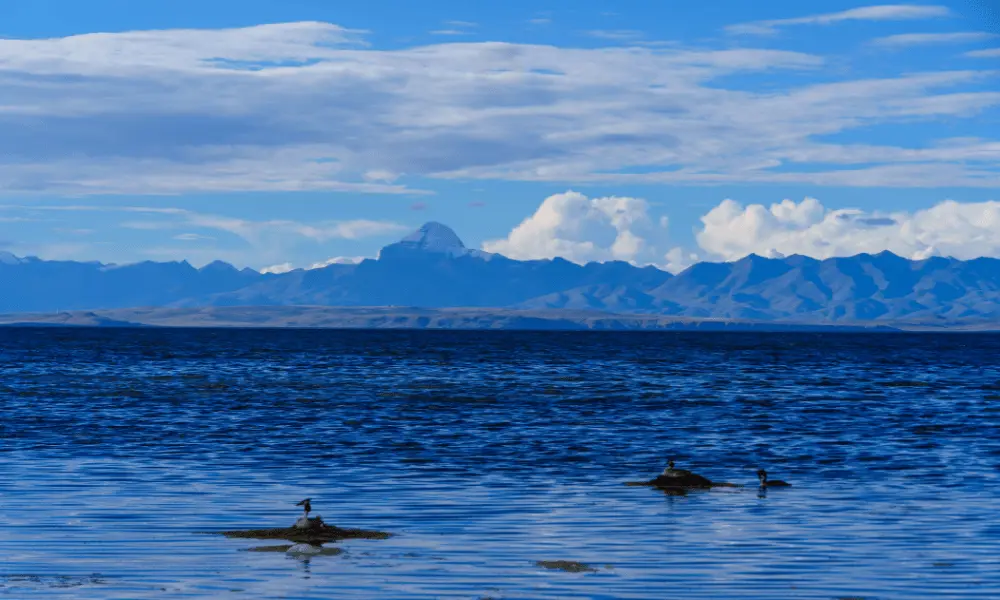
The sacred mountain at an altitude of 6638 m remains an exalted symbol of spiritual reverence and natural beauty. Many attempts have been made to scale the mountain; no one has managed to perch on its peak, thereby enhancing its mystical charm. While the summit of the holy mountain is off-limits to anyone, the devotees undertake a strenuous pilgrimage called the Kailash Mansarovar Yatra to come as close as possible to the sacred summit and perform Kailash Charan Sparsh, thereby forging a spiritual link between them and Lord Shiva.
Also Read: What is Kailash Mansarovar Yatra?
Charan Sparsh Significance
Kailash Charan Sparsh is a practice in which devotees touch Mount Kailash's feet in reverence. It is such a profound gesture, representing humility, worship, purification, and veneration, that it is believed to impart divine blessings on the individual; he or she is believed to become imparted with cosmic energy.
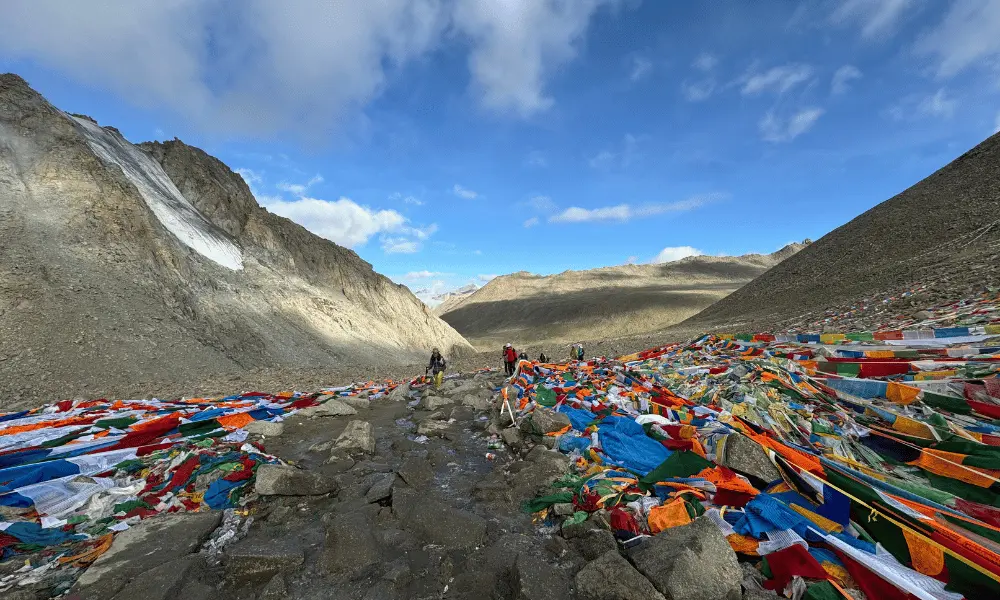
Here are what makes this practice significant:
Symbolic of touching Lord Shiva's feet
Mount Kailash is held in great esteem under Hinduism as the abode of Lord Shiva. So, touching even the base of this mountain is considered as if somebody is actually touching the very feet of Lord Shiva himself, an act of deep reverence and surrender.
To receive divine blessings
There exists a belief among pilgrims that through Charan Sparsh they could be greatly blessed with divine grace and energies, and thereby forge an immediate spiritual link with those towering energies associated with Lord Shiva and Mount Kailash.
Purification and liberation
It cleanses the soul, purifies the mind, and eradicates sins. Many devotees believe it to be the step achieved towards achieving the highest goal of "Moksha Prapti," which means to be liberated from the cycle of birth and death.
Humility and submission
The act of standing up or bowing down to "touch the feet" is one of the most widely accepted signs of respect, humility, and submission in Indian culture. Hence, performing it in front of Mount Kailash symbolizes letting go of one's ego and pride to stand in submission to the divine presence.
Charan Sparsh Route
The travel of Kailash Charan Sparsh is one steeped in devotion as Mount Kailash is said to be considered the home of Lord Shiva in Hinduism, while in Buddhism, Bon, and Jainism, it is sacred. Thus, Kailash Charan Sparsh is a ritualistic act, an offshoot of the actual Kailash Parikrama in which pilgrims are given one chance to touch a certain point on the northern side of Mount Kailash believed to be charged with divine energy.
The Kailash Parikrama is the grandiose circuit of approximately 52 KM, and Darchen is the base from where one starts the trek. To get there one has to cross the Nepal-Tibet border from either Kyirong or Simikot to Lhasa. After crossing the border, the travelers will be driven through various towns of Kyirong, Saga, Mansarovar, and Darchen. Driving then finishes, and the trekking journey begins, passing from Yam Dwar to Derapuk, the starting point of the Charan Sparsh journey. The trek from Derapuk to the Charan Sparsh site is 7 KM one way, taking approximately 6 hours in total for the round trip. You will be coming across some pretty tough terrains to negotiate along the way. What an adrenaline rush it will be, pairing a road trip with trekking, balancing spirituality with adventure!
|
Routes for Kailash Mansarovar Yatra |
|
Kailash Mansarovar Yatra via Kyirong |
|
Kailash Mansarovar Yatra via Simikot |
|
Kailash Mansarovar Yatra via Lhasa |
|
Trekking Journey |
Distance |
|
Yamadwar to Derapuk |
12 km |
|
Deraphuk to Charan Sparsh |
7 km |
|
Return to Deraphuk |
7 km |
Also Read: How to Reach Kailash Mansarovar?
Charan Sparsh Difficulty
Touching the feet of Mount Kailash holds highly spiritual implications in the experience of a pilgrimage. Yet, for the pilgrims, this seemingly simple act might entail going through a fairly rigorous ordeal. Altitude, temperature, and nature form some of the physical impediments that culminate to make Kailash Charan Sparsh a difficult one. Pilgrims take a multi-day trek in this setting, which at times can be very taxing. Kailash Charan Sparsh, a part of Kailash Kora, is located at the northern foot of the mountain about 7 kilometers distant from Derapuk. At about 4700 meters above sea level, Derapuk is the home base for the Kailash Charan Sparsh trek.
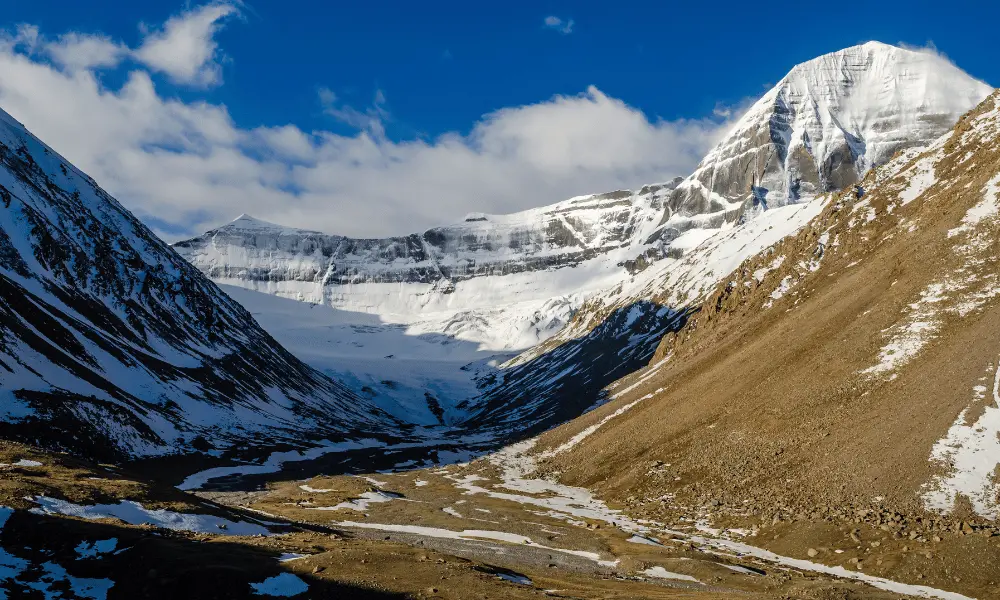
The trip can be tough, especially if you are not accustomed to the harsh terrain covered with snow and ice and 4100 meters high altitude. The pilgrims are shown overstretching themselves and suffering hardships in search of divine rewards on this trip viewed as the road to enlightenment and purification. However, one can easily pass by all these barriers if well-prepared for them. Everything relating to acclimatization, packing lists, and preparations for high altitudes is going to form important parts of the successful trip; choosing a responsible Kailash tour operator also makes a difference.
Related Read: Kailash Mansarovar Yatra Difficulty
Who can go for Charan Sparsh?
Mount Kailash is considered a sacred mountain for Hindus, Buddhists, Jains, and Bon followers and holds great spiritual importance. Touching the base or "feet" of this holy mountain-the Kailash Charan Sparsh-is viewed as a powerful act of reverence, a very personal spiritual endeavor. While the urge to undertake the pilgrimage is common to everyone, there are certain criteria involved with its preparation.

Physical and Mental Fortitude
The journey to Kailash and the Charan Sparsh point presents undoubted challenges all the way through; trekking in high altitudes with the kind of weather that can break your spirit and limited infrastructural facilities does carry its own implications. Before anything else, paramount importance is placed on one's fitness, both physical and mental. The pilgrims must be forged through the toughest of experiences: some may breathe the thinnest air, some may witness weather that behaves erratically, and the accommodations might just be too rustic-an aware, fearless pilgrim capable of withstanding is what is needed for this journey.
Physical Fitness
Coming to physical fitness, age-limit sets in, which differs from time to time depending upon each authority or tour operator. In general there is no age limitation for Nepalese and NRI. However, for Indian pilgrims, only those from 10 and 70 years are be allowed for this yatra. Above that, No Objection Certificate of a qualified doctor, who states that the individual is fit to undertake the trip; is compulsory for Indians. Also, pilgrims must be in good health or were declared fit by a qualified doctor. In cases where any pre-existing medical condition was involved, it must be disclosed, especially if related to lung or or heart problems. Gradual acclimatization to high altitudes is crucial, and adequate physical conditioning prior to the trip is highly advisable to endure the strenuous trek.
Legal and Logistical Requirements
Being situated in the Tibet Autonomous Region (TAR) of China, Kailash has certain legal and logistical hurdles to traverse. This means a traveler must have a passport valid for a minimum of six months after their travel date; obtain a Chinese Visa, usually a group one, through a recognized travel agent; and procure a Tibet Travel Permit issued by the Tibet Tourism Bureau.
Certain persons may be restricted in their attempt to undertake Kailash Charan Sparsh. Among these, especially those suffering from grievous pre-existing ailments, heart or lung conditions stand foremost. The persons for whom this journey constitutes a dire health hazard. Very small children and the elderly beyond allowable age limits are usually restricted because of threats related to high-altitude travel. Also, those who wish to travel independently, without permits and valid visas.
Charan Sparsh Rituals
The Charan Sparsh rituals are steeped in the traditions and customs of the Hindus. The practice is carried out at the Charan Sparsh area situated on the northern face of Mount Kailash. Varying expressions of devotion may exist from one person to the other, but generally, the gestures related to the rituals imply humility and respect: folding the hands, bowing down, touching the place.
Hand Gesture
Naming the hands together as Namaste is a predominant Hindu gesture for respect or greeting others or for worship in front of a divine figure. Pilgrims upon moving towards the Charan Sparsh point give their final offerings in the form of Namaste towards Lord Shiva.
Bowing
Bowing down is a sign of respect, showing humility towards divine wisdom and grace. Bowing at Charan Sparsh signifies a devotee's acceptance of the overwhelming spiritual power of Lord Shiva and extreme reverence for his presence on Mount Kailash.
Touching the Feet
The holy act of Charan Sparsh is considered to be the touching of the northern side of Mount Kailash, which represents the feet of Lord Shiva; pilgrims touch them with their hands or lay their head down.
Besides these, some pilgrims also take some religious items according to their belief, like incense, flowers, khada (ceremonial scarf), etc to offer to the gods.
Charan Sparsh Preparation Tips
Kailash Charan Sparsh, while bearing the semblance of a very simple-and-easy walk, is essentially physically overpowering. The unusual weather due to high altitude and treacherous terrain demands pilgrims' utmost preparedness. To ensure that the journey remains smooth and successful, one should plan well in advance, considering the best time to go, what to carry, and how to maintain good health during the trip.
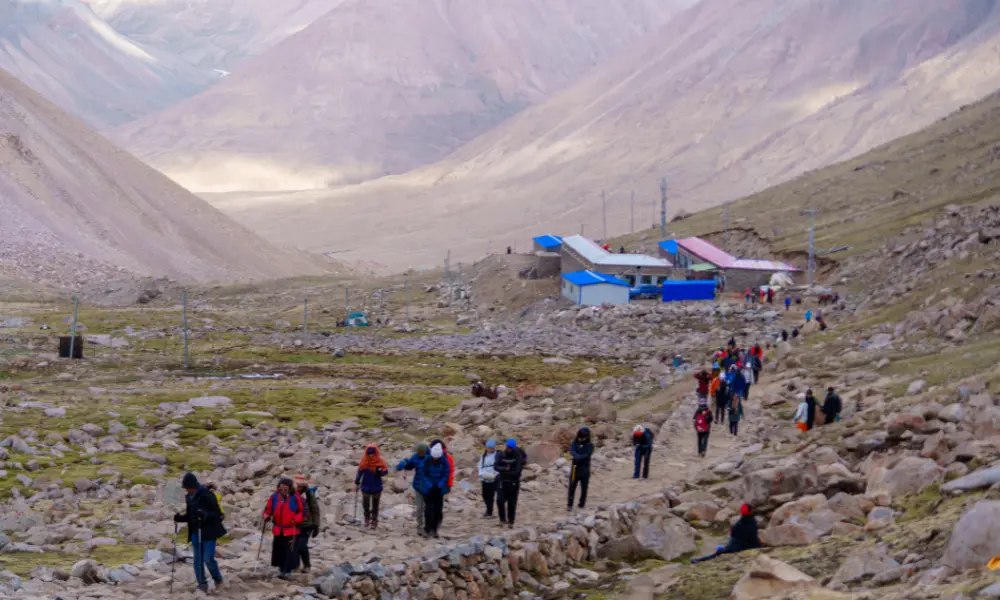
Best Time to Visit
Charan Sparsh constitutes one important phase of the Kailash Yatra and is ideally undertaken from May to the end of September. During these months, the weather remained mostly stable and amenable to travel. June and July enjoy perfect weather conditions but also lend themselves to being the busiest months, some rain, or snow included. If one prefers to miss the crowd, then the perfect months to go would be August and September, with a bit of snowfall giving an ethereal feel to the ambience.
Read More: Best time to visit Kailash Mansarovar
Packing Essentials
Proper packing remains important for a safe and comfortable pilgrimage. Due to the unpredictable weather conditions and the texture of the terrain, one has to carry proper trekking equipment, clothes that can be layered one over the other, and a backpack that is not heavy. Do remember your essential documents, including travel permits, a first-aid box containing basic medication, such as any personal medicine you would require while on the trip. Often one prefers carrying spiritual items needed for performing some rituals on the way. These stuff, when all come together, enable a smoother experience alongside enhancing one's very own safety.
Read More: Kailash Mansarovar Yatra Packing List
Health Tips
In such a trek at a very high level, places with lower oxygen levels are of priority. One stands the risk of altitude sickness while traveling through the area. Thus, keeping it slow and ensuring gradual acclimatization along with lots of drinking water becomes a worthy prescription against altitude sickness. The pilgrimage demands a lot from you both physically and mentally; the better the fitness, the better are your chances to enjoy the whole trek. Hence, keep exercising before the journey and ensure your doctor gives you a clear go. Also, preparing yourself for the psyche-testing tests will add an extra mile toward a satisfying-and-resilient journey.
Related Article: Kailash Mansarovar Yatra Preparation
Conclusion
The Kailash Mansarovar Yatra consists of various sacred rituals carried out in the Tibet Autonomous Region, one of the most important being Kailash Charan Sparsh. It is recounted that in this act, the feet of Mount Kailash are touched in offerings of worship. By doing Charan Sparsh, a pilgrim is said to ascend the heights of spiritual blessings and grace of divinity. It is considered an expression of recognizing Lord Shiva's mercy and wisdom, since Mt. Kailash is deemed His eternal abode.
Attesting to the journey's perilous nature and hindrance from weather factors, the spiritual reward more than compensates for all the suffering. The discussion in this particular article intends to focus on the heart of Kailash Charan Sparh: exploring its meaning, the purpose of its practice, its timing, and the process, thus allowing the Yatra to be approached with a little more understanding. If they somehow get to prepare their approach toward the Yatra, devotees can face the obstacles, fulfill their spiritual aims, and return fully graced and spiritually fulfilled with much peace in their hearts.
Frequently Asked Questions (FAQs)
Here are some frequently asked questions related to Kailash Charan Sparsh:
What is Kailash Charan Sparsh?
Kailash Charan Sparsh is the act of touching the feet i.e. the base of Mount Kailash which has a specific point at the northern side of the mountain.This practice is believed to bring immense spiritual benefits to the pilgrims.
Is climbing Mount Kailash allowed?
No, climbing Mount Kailash is not allowed. However, previously various attempts have been made to climb the mountain which have not been successful. In recent conditions, the mountain is banned to climb to preserve its spiritual significance.
Why is Kailash Charan Sparsh done?
Performing the Kailash Charan Sparsh is done to show the devotion of the pilgrims to Lord Shiva who is believed to reside in Mount Kailash. It is also believed that this act is done to seek blessings of the divine and gain spiritual benefit from it.

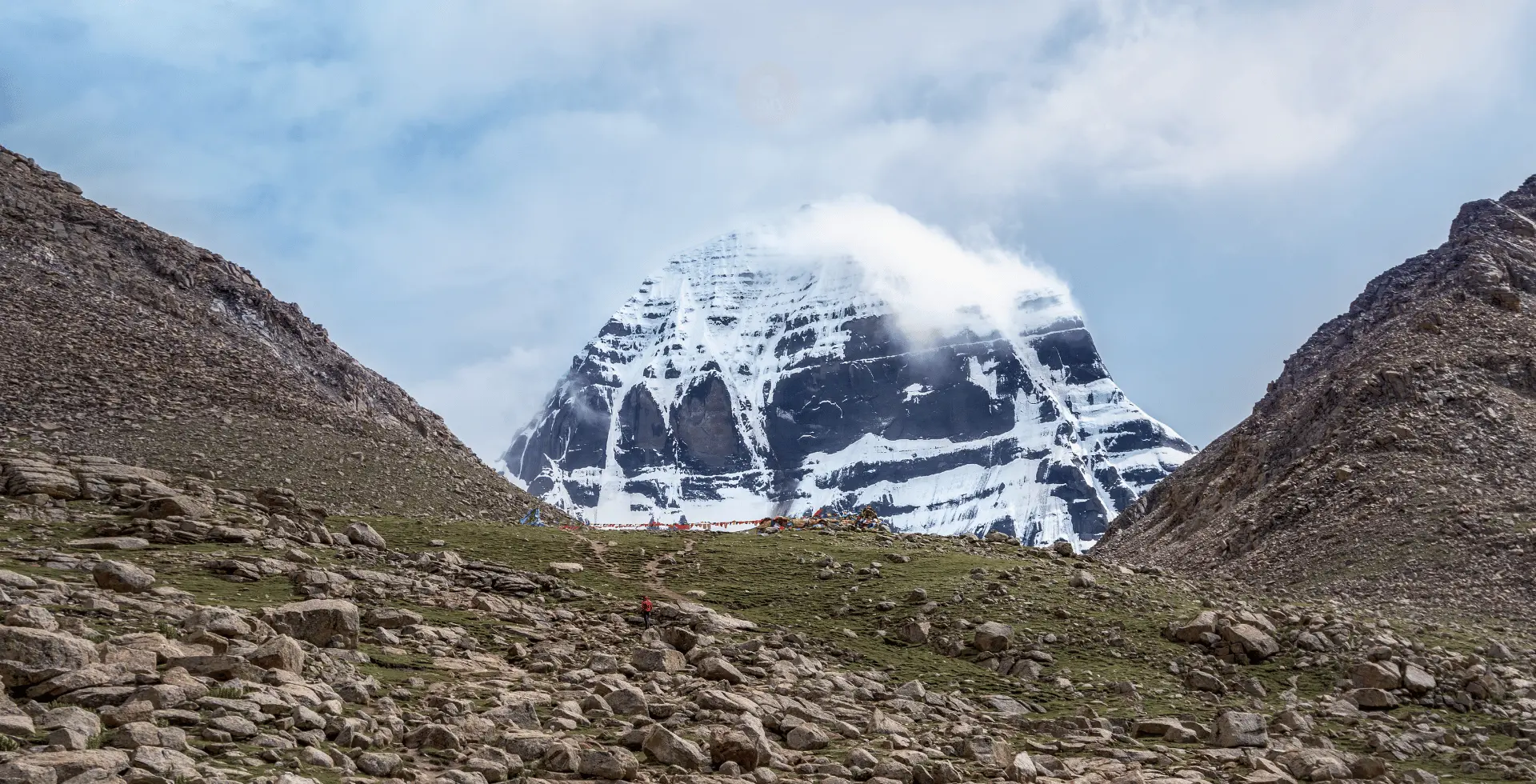
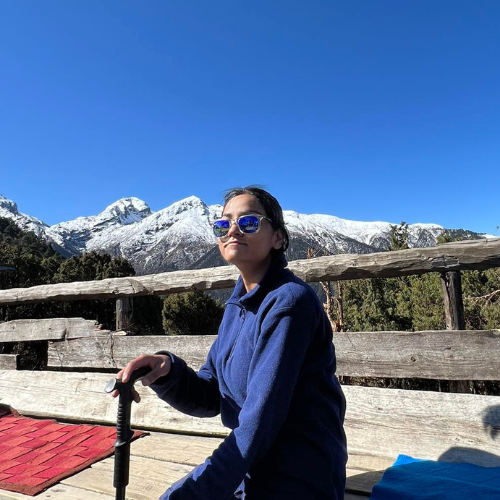 Mandira Itani
Mandira Itani